Finland were never expected to do well at Euro 2020, given it is their first ever appearance at a major tournament finals. Whilst their win against Denmark gave them hope of causing problems for other teams, the performance against Russia would have reminded them that no match is easy at this level.
However, it also raised another question; Teemu Pukki has so far struggled to play at the level we know he can, which could be down to the ankle injury he suffered at the end of last season, so should he be rested for the next match? He was taken off against Russia, with Lassi Lappalainen coming on in his place, but is he the best replacement for the Norwich City talisman? In this tactical analysis, we will look at Pukki’s game, before analysing four other players who could partner Joel Pohjanpolo if Pukki were to miss a match.
Teemu Pukki
Before looking at the other forward options in Finland’s squad, we will give some analysis of how Teemu Pukki plays, setting up several things to look out for later on in the scout report.
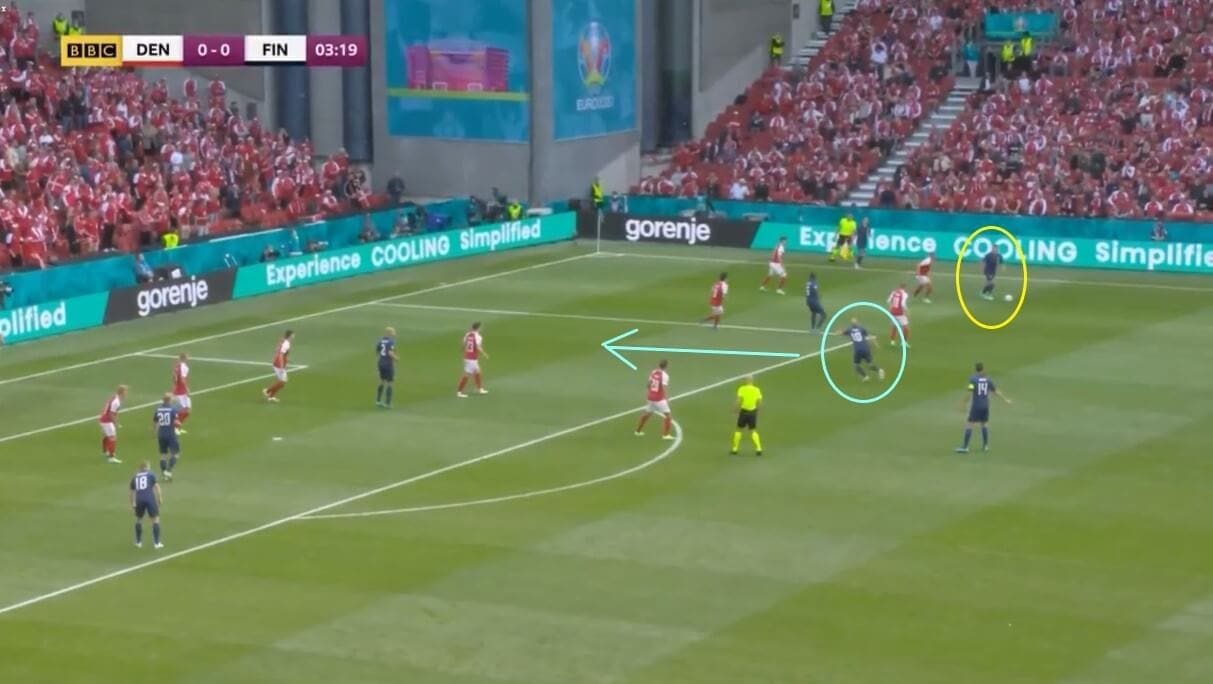
Strikers need to lead the line and find the spaces, and this is something Pukki does well. Here, in the game against Denmark, he makes a run into the space ahead of him. Whilst this doesn’t get him the ball from his teammate, it is still important for the team, for several reasons. Firstly, it gives the Danish defenders something to be aware of, meaning there is more chance that they will take their eyes off the ball, which is with the Finnish player in the yellow circle, allowing him to run into the box and link up with a teammate. Secondly, it demonstrates to his teammate that Pukki will offer him a passing option around the pitch, helping to move the ball into the box and set up a goalscoring opportunity. Therefore, whilst Pukki may not have scored yet at Euro 2020, his movement has been a key factor in Finland’s attacking play.
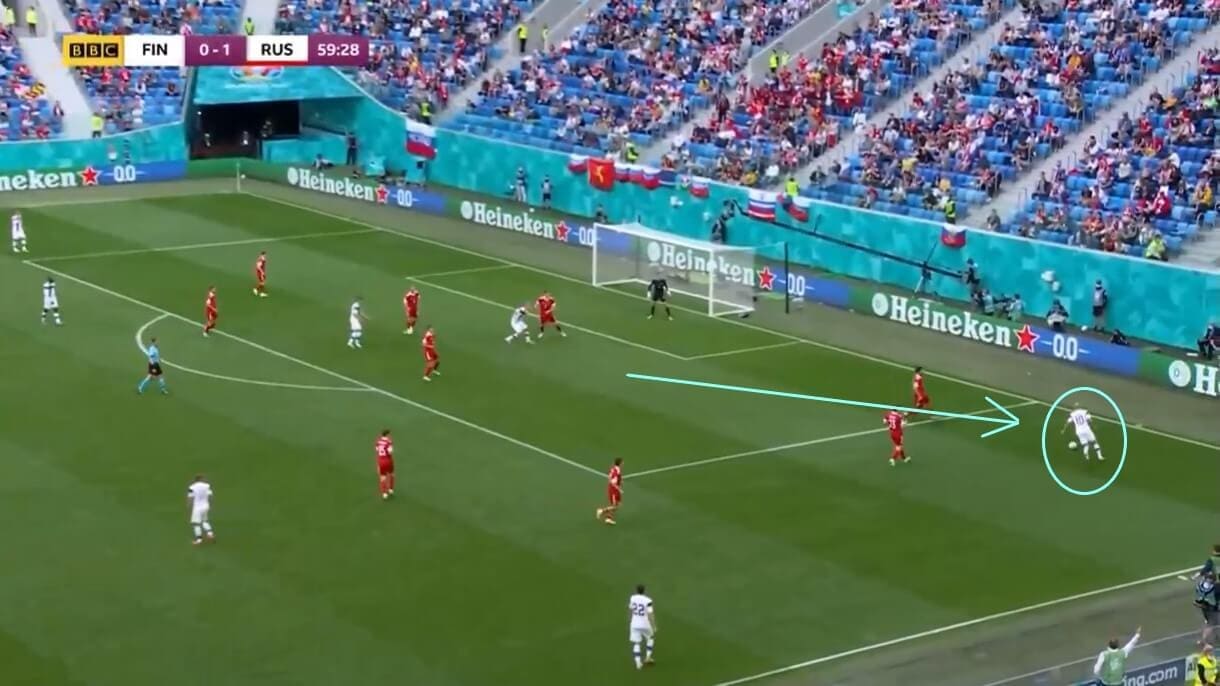
This image shows another way that Pukki moves into spaces to help his team. Here, he has come across to offer the short passing option, meaning Finland haven’t needed to cross the ball into the box where there are plenty of Russian defenders ready to clear it. Russia played with a back three during this game, so there wasn’t much space in the box for Finland to use; Pukki therefore had to make these runs into spaces to receive the ball. Any replacement for him would need to replicate this, as Pohjanpolo tends to stay more central and occupy the defenders, providing the target for balls coming into the box.

However, the point at which we first noticed that Pukki wasn’t at the top of his game was when he struggled to influence the game in the way that he normally does. Here, Rangers midfielder Glen Kamara has broken through the Russian ranks, and is looking to pass into the middle to continue the attack. However, Pukki is in front of the Russian defenders, meaning that Finland risk losing possession by passing into him. In the second half, we expected Finland to come out and fight for the game, having gone in at half-time a goal down, but they didn’t, and it was situations like this that highlighted that.
Alternatives
Teemu Pukki was taken off after 75 minutes against Russia, and his recent ankle injury came back into discussion amongst fans after that. With this in mind, we have picked out four alternatives in Finland’s squad who could take his place in the forward line, analysing what they would bring to the team and how they would fit into Finland’s tactics.
Lassi Lappalainen
Lassi Lappalainen was chosen to come on for Pukki against Russia, but he is more of a wide attacking player who cuts inside when needed, rather than an out-and-out striker like Pukki. By bringing him on, Finland were clearly looking to use his ability to move into spaces to win the ball, hoping that that would create more opportunities for them in the final third.
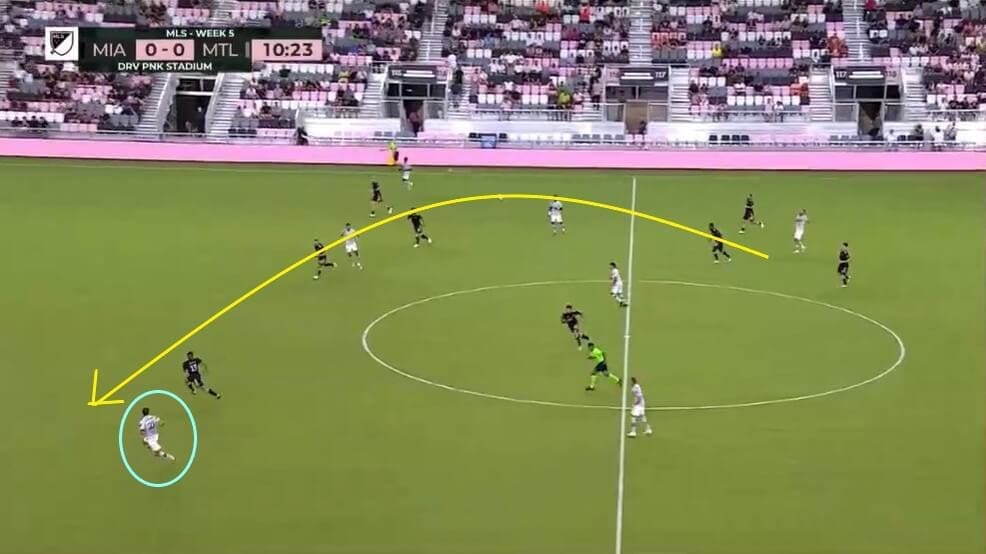
Lappalainen mainly plays outside opposing defenders, giving his teammates a wider passing option during transitional play. Here, whilst playing for CF Montreal against Inter Miami in the MLS, he is looking to make a run beyond the defence; his teammate has seen this and rewarded it with the diagonal pass, as the yellow arrow illustrates. This shows how Lappalainen is a trusted member of the team, with his teammates knowing that, when they need someone to get into space, he will be the one to do it.
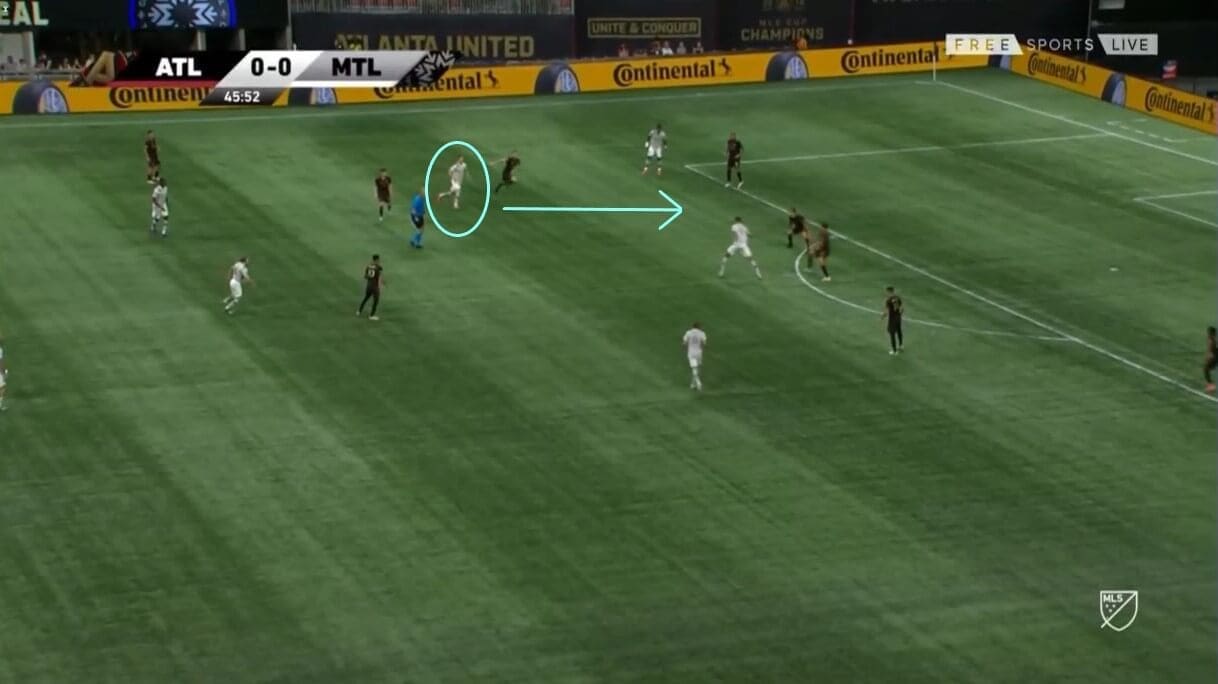
He doesn’t only run into open spaces behind opposing defences, but also when he sees gaps in the defensive line ahead of him. Here, against Atlanta United, he makes the pass and immediately looks to run forwards, giving his team the option of playing the quick return pass into that space. This awareness is why he has been such a key player for Montreal.
We have already mentioned that Pukki looks to make similar runs into spaces, so this is one aspect of his play that Lappalainen could take on. With Pohjanpolo staying as the target player, it is possible that Lappalainen could be asked to move out to the wide spaces much more, winning balls and helping to link play up in the final third. Therefore, tactically, he would fit in if Finland were to replace Pukki with him in their next game.
Marcus Forss
If Finland are looking to bring in an out-and-out striker to replace Pukki, then Brentford’s Marcus Forss is the obvious choice. He carries a consistent threat in the final third, getting in the right areas to score goals for his team.
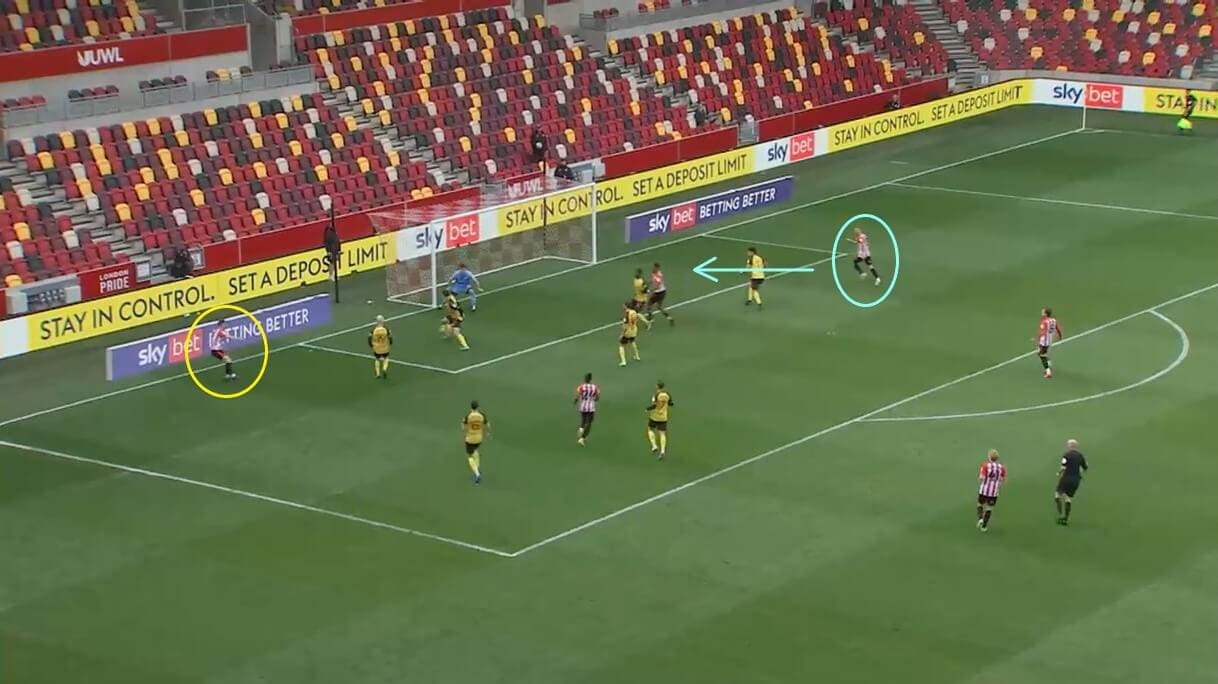
Here, Brentford are attacking against Watford in their EFL Championship clash, with the ball being pulled back into the box from the goal line, and Forss has positioned himself behind the Watford defenders, waiting for the ball to reach him, before scoring a relatively simple goal. This demonstrates his patience, never forcing situations to happen, and instead waiting for the right moment before striking. It also shows his ability to play as part of a forward line, rather than on his own, as Brentford had Ivan Toney on the pitch at the same time. Therefore, with Finland playing a front two, Forss would give them the goal threat in the box that they have been missing with Pukki so far, and would adequately fit into their attacking structure.
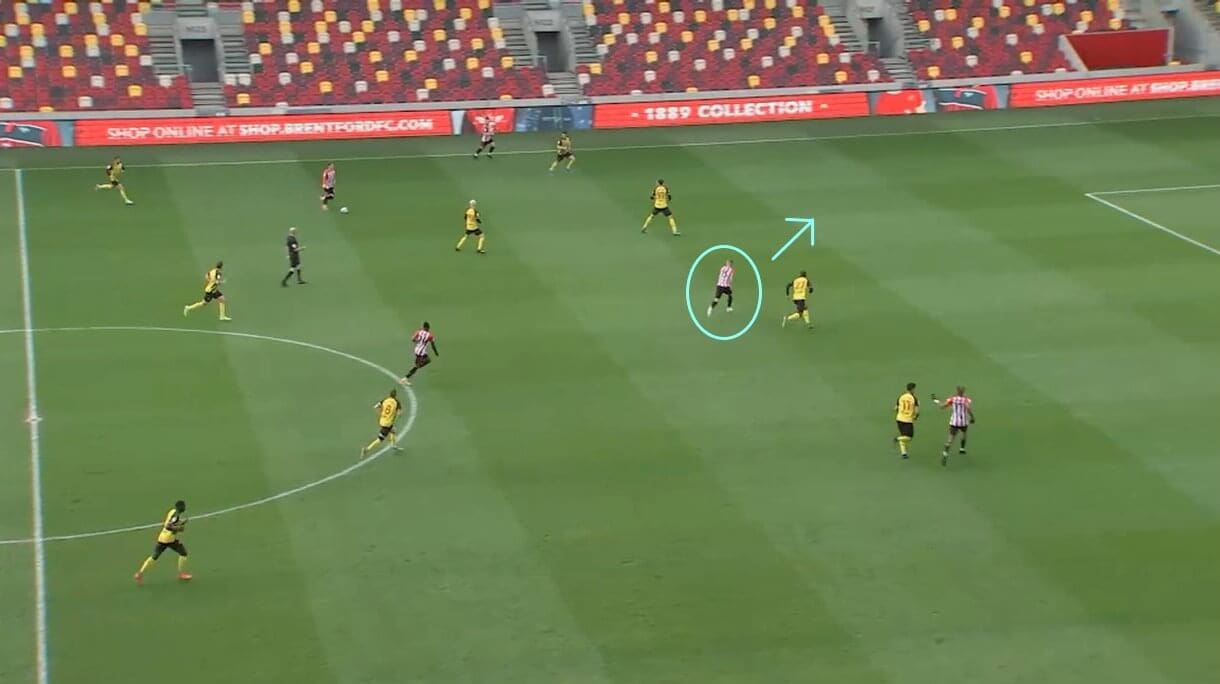
It’s not just his goal threat that would make Forss an able replacement. Like Lappalainen, he also makes runs into spaces and constantly looks for gaps in opposing defences to exploit. In this image, he wants to give his teammate a passing option behind Watford’s back line, and this is key in a good striker’s game, as they are expected to create opportunities to score. This is something Forss has improved since becoming a regular player for Brentford, and is another tactical idea that he would bring to Finland if selected to start the next game, helping to stretch the play and cause problems for Belgium’s defence in their last group game.
From these two images, we can see how Forss would be a good like-for-like replacement for Pukki, because he would support Pohjanpolo and give Finland an extra goal threat. However, he doesn’t make runs out to the wings as much as others do, so this is perhaps where he falls down compared to other options.
Pyry Soiri
Pyry Soiri is a winger by trade, but has all the necessary qualities to operate as a striker, such as pace, spatial awareness, and an eye for goal. If Finland needed him to play in the front two, he would be able to slot in with no problem.
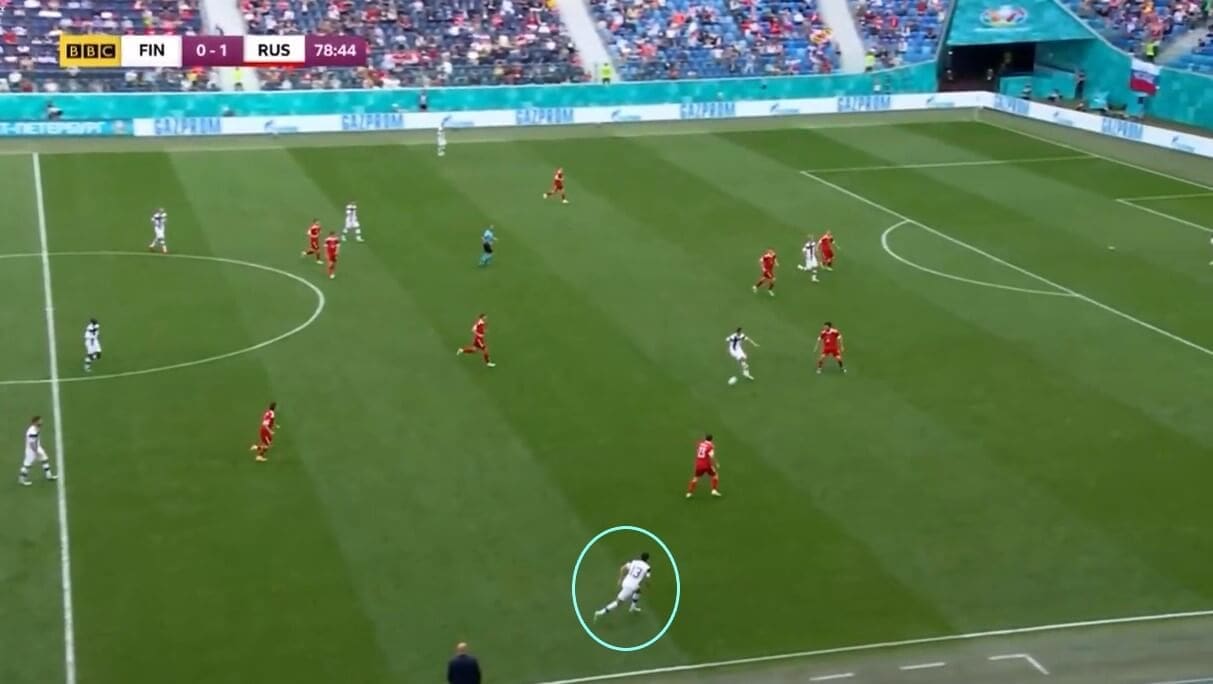
This image shows Soiri on the wing against Russia, and we can see how tight he is to the sideline. His role here was to maintain the width in Finland’s attack, ensuring that Russia couldn’t become defensively compact in the box. Soiri’s pace allows him to move up and down the wing with ease, which gives his teammates a passing option in the wide channel whenever they need it. This is a really important quality to have, and gives his team options tactically when the opposition is proving to be tough to break down.
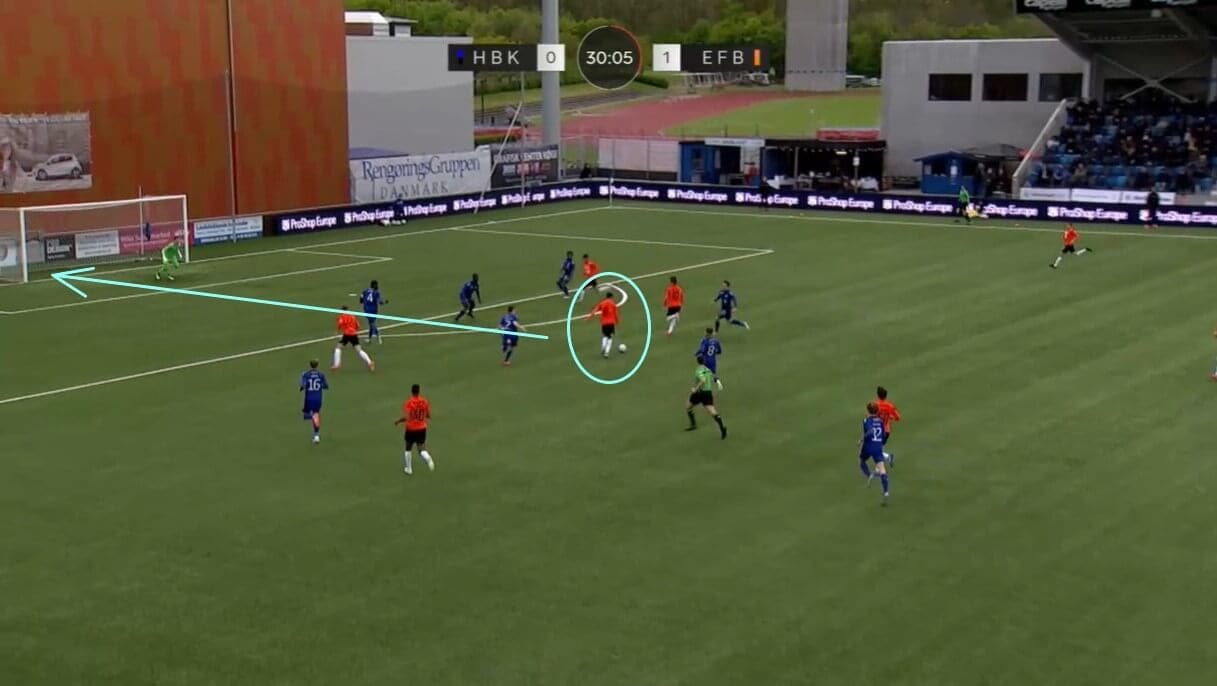
However, as this image shows, Soiri can also cut inside and play as an attacking midfielder when needed, giving his team a goal threat in the central channel and demonstrating his versatility. He has a good range of passing and an ability to see gaps, which is why opposing defences, like HB Koge here, need to be wary whenever he has the ball. Here, he has found a small pocket of space, and scores for Espjerg from this position, as the blue arrow shows. The composure he has with the ball is important, as that could help Finland to move the ball into dangerous areas more often than they are at the moment, increasing the potency of their attacking play.
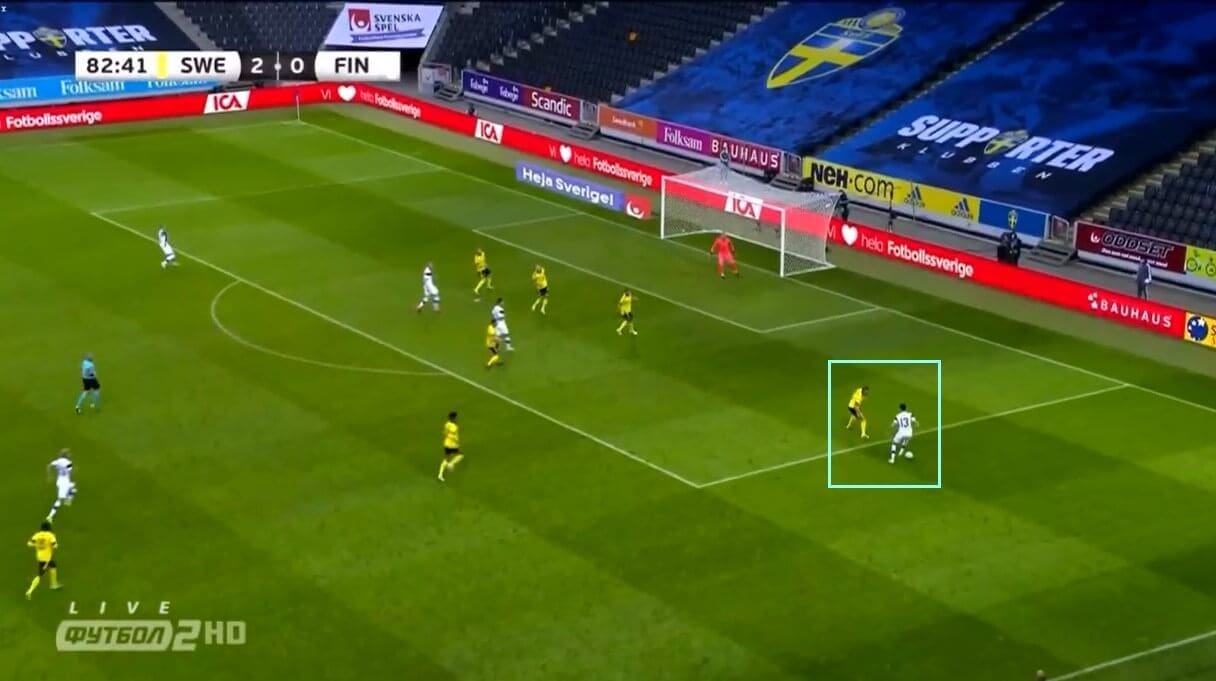
One thing that would be particularly useful for Finland if they did choose Soiri to replace Pukki is that he can engage in duels and often win them, with his quick feet meaning he can get around opponents and into dangerous areas of the pitch. This is something we haven’t seen much of from either Pukki or Pohjanpolo yet, so having Soiri in the forward line would allow them to cause more problems for opposing defenders, giving Finland more of a chance of winning a match by a comfortable margin.
As mentioned, Soiri is naturally a winger, so the chances of him being asked to play as part of the front two are slim. However, should he get picked there, he would give Finland a lot of options, as he is comfortable with the ball in all areas of the pitch. Therefore, if, like Pukki, he found himself in front of the defence and not behind it, he could still shoot at goal, meaning his threat would never be lost due to poor positioning.
Fredrik Jensen
The final player who could replace Pukki is Fredrik Jensen. Normally, he is an attacking midfielder, tending to compete with Robin Lod for a space in the midfield. However, he has been deployed in a more forward role at times, although he doesn’t always appear comfortable in it.
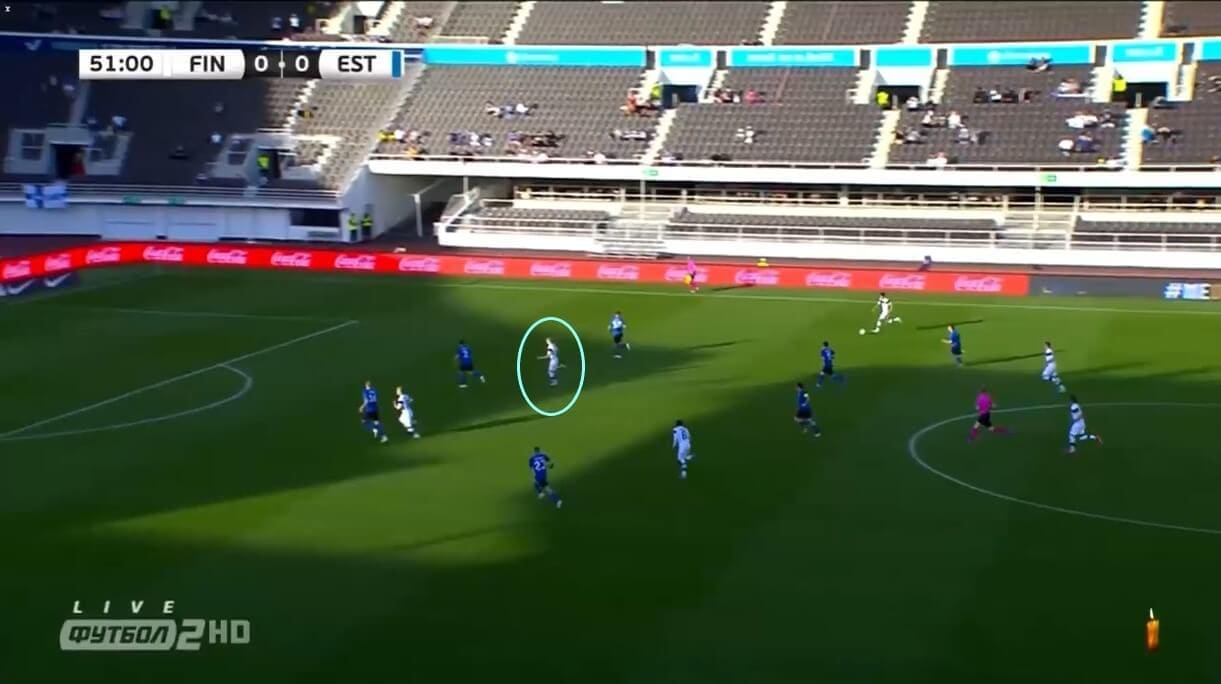
This image, taken from Finland’s pre-tournament friendly with Estonia, shows Jensen trying to make a run behind the defence, with the ball on the far side wing. However, Jensen seems more reluctant to move through the gap, which perhaps comes from him being a midfielder by trade. He is a player who wants to receive the ball, so is more likely to keep his position and wait for it to come to him before then turning and running forwards with it. Whilst he does it in a different way, the fact that he still makes the runs through gaps is one similarity he has with Pukki, but the fact that he doesn’t make the run until he has the ball implies that he would not be the best replacement for him.
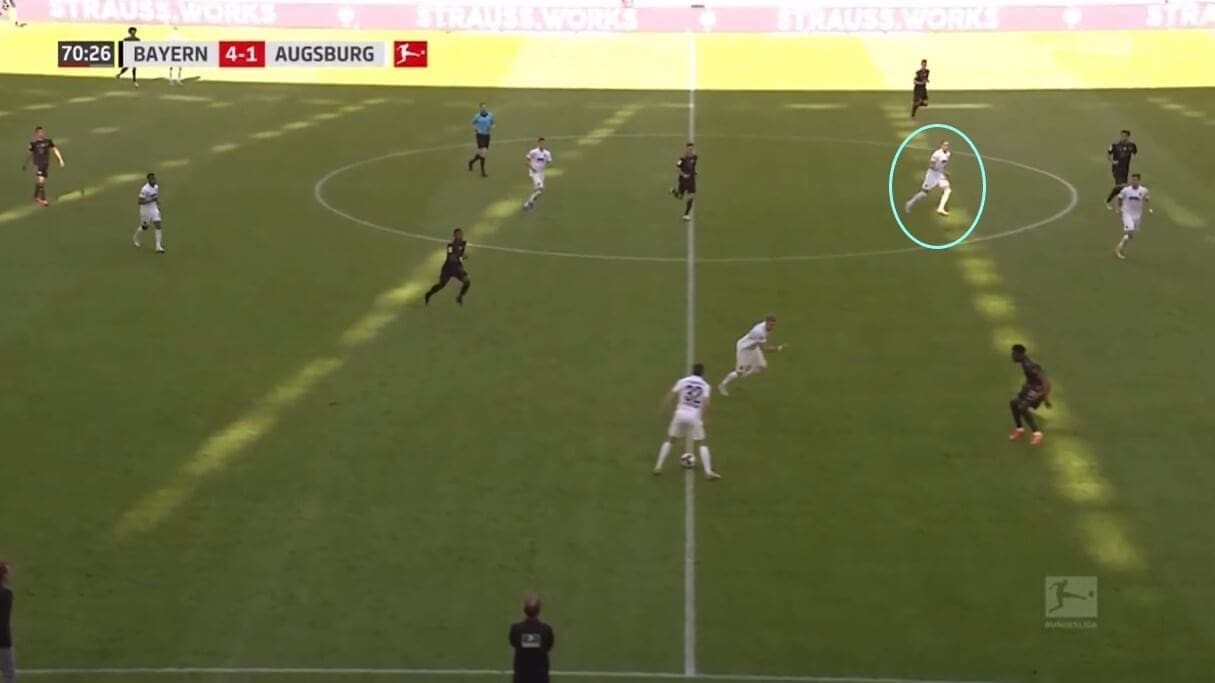
Jensen plays for Augsburg in the Bundesliga, and has become one of their more dependable players. It is not uncommon to see him appear in pockets of space in front of opposing defenders, as he has here against Bayern Munich. His role in the team is generally to offer a route into the space behind, either by dribbling the ball through the gap or by passing it forward to another player. Therefore, the variety of options he brings in the final third is one way that he would fit into the Finnish forward line, as he would be able to drop back and provide a link between the midfielders and Pohjanpolo; something we haven’t seen yet from any of our other players.
Conclusion
In conclusion, each of the four players has different qualities on the pitch. However, as a replacement for Teemu Pukki, Fredrik Jensen looks the least likely, because he will come into the midfield and help the team to move the ball around the pitch from there. Pyry Soiri has the quality to do well in the forward line, but his ability to create problems with his positioning and spatial awareness will see him deployed more as a winger, although he will have licence to cut inside and shoot at goal as often as possible.
That leaves Lassi Lappalainen and Marcus Forss. It would depend on how Finland want to play tactically as to which of them would get the nod, as Lappalainen is more likely to drop into wide areas to pick up the ball, whereas Forss could serve as an alternative to Pohjanpolo if the Union Berlin striker (on loan from Bayer Leverkusen) were marked tightly by opposing defenders. We have seen the threat that Forss poses in the box, but, as a more well-balanced replacement, Lappalainen appears to be the right choice. However, if Finland are in desperate need of a goal, then we can expect Forss to come on and help them achieve it.





Comments